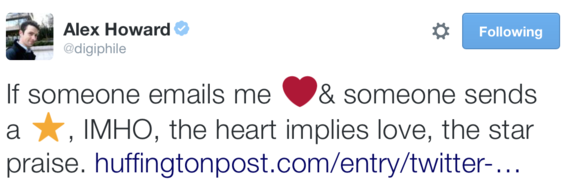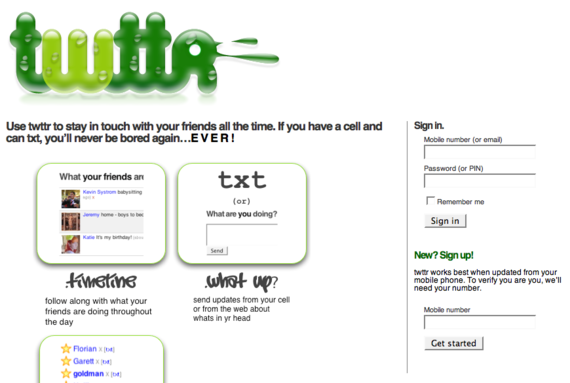Today, @Twitter announced perhaps the biggest change in its interface since the platform began supporting #hashtags. To sum it up: "favorites" are now "likes." The visual elements represented by ⭐️s are now ❤s.
What does this change mean for Twitter's users? It means a lot.
Whatever "faving" a post with a "star" meant to users (placement, praise, bookmarks), the "heart" implies something more.
Stars are infinite. They exist in places -- galaxies -- that extend far beyond the realm of the human world. Maybe stars represented Jack Dorsey, Ev Williams, Noah Glass, and Biz Stone's hopes for the growth of the Twitter platform.
...but not everything can be your favorite.
❤s are much closer to us. It comes down to this: the heart symbol is undeniably personal, while the star symbol is not.
✨
The universe has stars, but people have hearts. Hearts can be found only where life exists. Twitter needs new life, and it's surely not going to find it out in space.
Get the picture?
Like the Web, Twitter's platform was built on the idea of public communication. Twitter took the format of SMS and brought it to the Web. TWTTR was orignally a "shortcode." Remember the 5-digits? In 2006, you couldn't even sign up for @twttr without a "cell."
Twitter was designed to be a place to "text the public." Even today, users can still text-to-tweet.
Personal expression on Twitter, however, has always been a design afterthought. The service was launched in 2006. One year later, the @mention was officially supported.
In 2010, #hashtags on Twitter, proposed by Chris Messina, were finally supported as social hyperlinks.
Other platforms headed in a different direction. Facebook's evolution has seen its users' profiles go from being default "public" to "semi-public" and "private."
Snapchat has taken the opposite route to Twitter; it's gone from being intimately private to more public. Even its most public form of expression, "Our Story," keeps Snapchat's users' posts and their audiences within the confines of the platform. That's not "semi-public," it's pseudo-public.
Express Yourself.
The world has changed since Twitter went public in 2013. Twitter-- for the most part -- has not.
⭐ > ❤
The move from "stars" to "hearts" marks more than a change in emojis, or the labels that users apply to tweets. In the game of social networking, it's a change in strategy -- to make Twitter more personal.
Facebook's "like" has always been personal. The "thumbs up" symbol is an affective action. Facebook likes are so personal, in fact, that researchers can use them to predict users' personality traits.
Apply Magic Sauce translates individuals' digital footprints into psychological profiles. Apply Magic Sauce - Prediction API - Test
Design to Define.
Twitter has already gone the personal route once with messaging. But design changes, rather than features like IM, might make users more likely to express themselves -- and that's beneficial to both the company (through the resale of data and advertising) as well as the space where Twitter users interact.
Will designing Twitter to be more personal pay off in the long run? That's yet to be seen. But remember what Jules Winnfield said: "Personality goes a long way."






